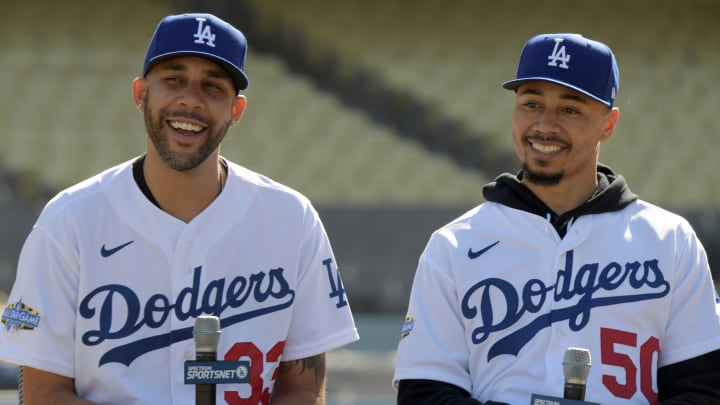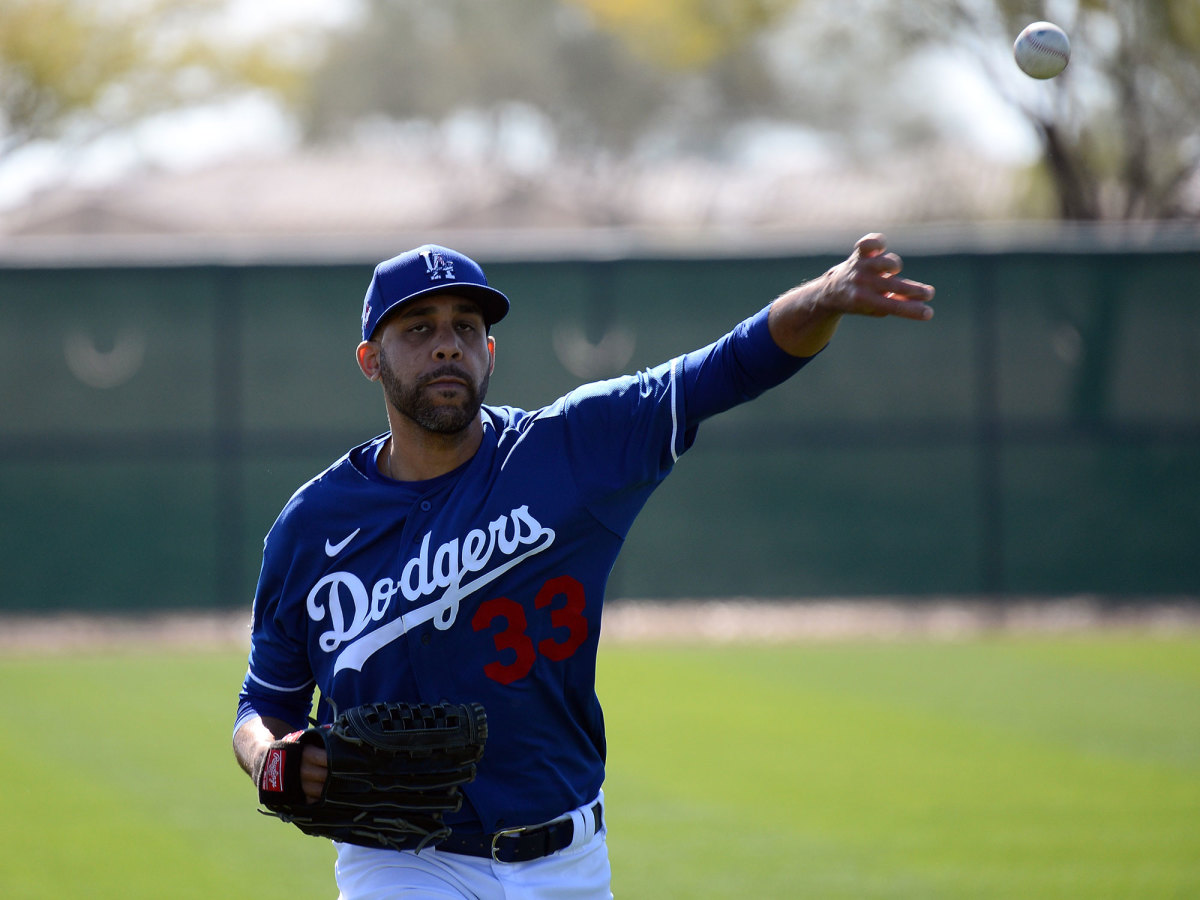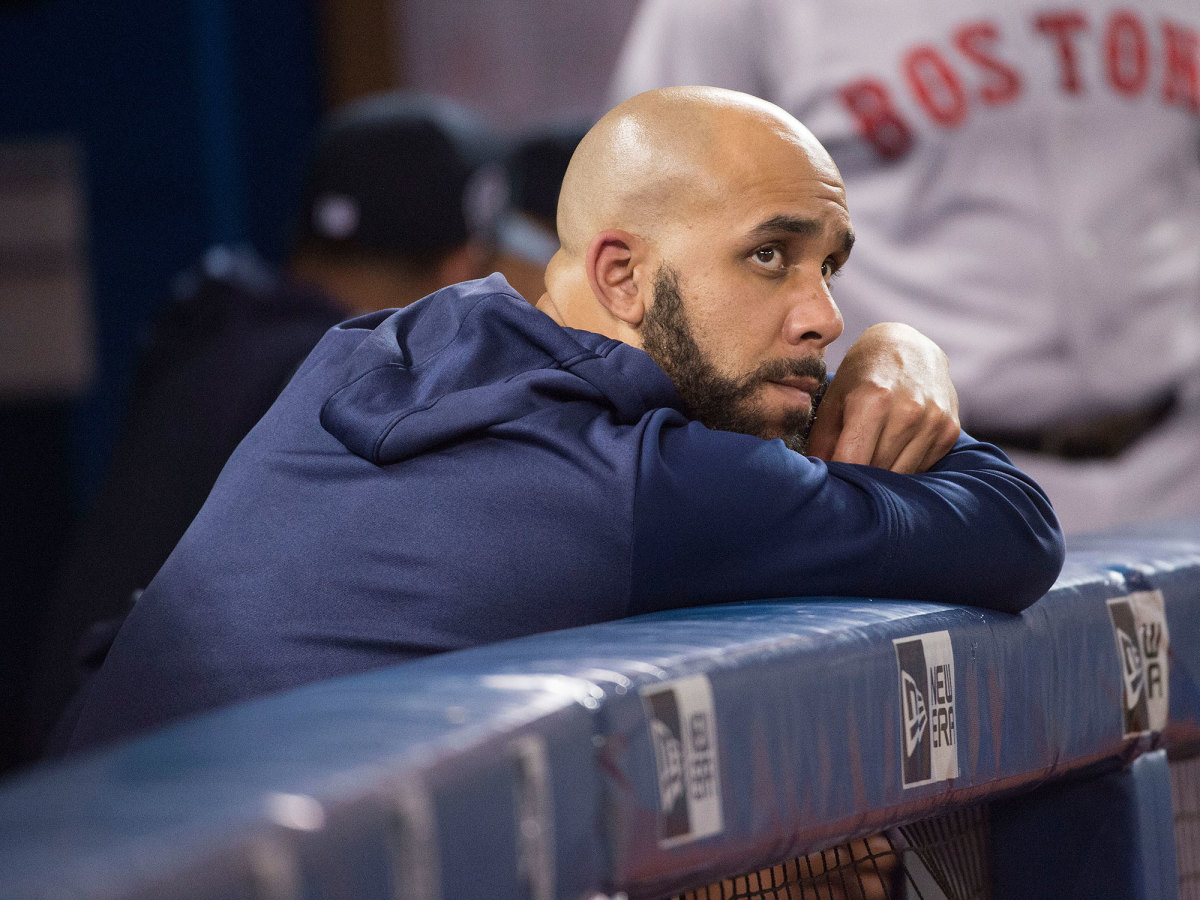With Polarizing Red Sox Years Behind Him, David Price Ready for Fresh Start in L.A.

GLENDALE, Ariz. — On one of his first days in a Los Angeles Dodgers uniform, David Price stepped into the batter’s box to take his turn in pitchers’ bunting practice. “Three to third base side, three to first base side,” a coach instructed.
Price would have none of such rote.
“That’s it?” Price said. “No. We need to compete. We need to come up with a game or something.”
And so they did. The pitchers rigged a point system to see who was best at placing their bunts.
“It just locks guys in a little more,” Price said. “Makes them care. I want to get that care factor in it. It helps you be better and get to that next level. I’m going to compete in anything I do.”
Just another spring training bunting drill on a back field became a small window into why Dodgers president of baseball operations Andrew Friedman, who knows Price from their six years in Tampa Bay, called him “as good of a teammate as I’ve ever seen.”
Lockering between Clayton Kershaw and Walker Buehler, switching leagues and under the cover of being one of the most accomplished throw-ins in trade history, Price is in a very good place this spring. His blood is flowing freely. For the first time in years, Price has unencumbered circulation in his pitching hand thanks to surgery last September that removed fatty tissue growths that had been pressing upon his carpel tunnel, pinching it like a car tire on a garden hose.
And no, he said, the wrist condition that wrecked what began as a stellar 2019 season was not caused by his playing video games such as Fortnite up to three hours a day.
“Dr. [Matthew] Leibman did not correlate those two,” Price said. “It’s from just doing what I’ve done for as long as I’ve done it. It was unfortunate. I’ve played baseball a lot longer than I’ve played video games. Many more hours doing baseball activities.
“That [gaming] wasn’t the issue. That wasn’t what it came from. I’ve always played video games. It’s something I’ve always done with my teammates. I was talking to Friedman about it. He said, ‘I love the fact that you guys hang out and play. I’d rather have you do that than hang out at the hotel bar or go out.’ Because I’m not into that.
“I enjoy being with my teammates in a secure setting and being competitive. For me, that’s my favorite part of video games: the competitiveness away from the field.”
The Dodgers are Price’s fifth team. He joined the Red Sox in 2016 under much fanfare and a seven-year, $217 million free agent contract that made him the richest pitcher in history. He left last month as an appendage to what is commonly known as the Mookie Betts trade. Boston even forked over to the Dodgers half of the $96 million owed to Price over the next three seasons to make the deal work.

Price, 34, is a Cy Young Award winner, a five-time All-Star, the all-time winning percentage leader at Fenway Park (.784, minimum 50 starts, on a 29-8 mark with a 3.12 ERA), and the owner of a career record (150-80, 3.31) that is a close facsimile to that of Hall of Famer Roy Halladay at the same age (169-86, 3.32).
Halladay was 33 when he made the jump out of the American League and into the National League. He promptly won the Cy Young Award in his first season in the more pitcher-friendly environment.
Ample evidence exists from other pitchers similar to Price to suggest he is due for immediate improvement. In 2008 Johan Santana, 28, won the ERA title in his first year in the NL. Cliff Lee, in his first year in the NL in 2011, led the league in shutouts, finished third in the Cy Young Award voting and posted the highest strikeout rate of his career. When Max Scherzer jumped back in the NL after five years in the AL he led the league in strikeout-to-walk rate. Halladay, Santana, Lee and Scherzer all lowered their ERAs immediately, and by an average of 0.77.
Even in a down year last season (7-5, 4.28) Price struck out 10.7 batters per nine innings, a career high, which speaks to his arm strength. He does so with a unique pitching profile. Price has exquisite command of a two-seam fastball/changeup combination, which for most pitchers typically doesn’t translate into strikeouts. He ranked among the top 10 starters last year in relying on those two pitches (53%), but the other nine who did so averaged 7.3 punchouts per nine.
Expect Price to incorporate more elevated four-seam fastballs this year. The Dodgers love that pitch to combat the modern launch angle swing and Price has been successful in the rare times he works up and down, not just in and out. Last year he threw elevated four-seamers only 10% of the time, but when he did batters hit just .194.
Drafting behind Buehler and Kershaw, arriving with lower expectations, surrounded by less noise, joining a more forgiving league, pitching in a more pitcher-friendly home park, enjoying a tightly-knit clubhouse that reminds him of the Red Sox … there are many reasons why Price is smiling these days. The biggest of all would be getting full circulation back in his pitching hand.
“My hand’s warm right now,” Price said, extending the hand. “It has color.”
The trouble with his wrist dated back to his years pitching for the Rays. Two days after most starts Price would visit trainer Ron Porterfield to have the wrist “scraped” to quiet the inflammation. In doing so Porterfield would tell him the extra tissue in his wrist felt like gravel as he worked over it.
“He would scrape it and scrape it and scrape it and it would get better, but it never went away,” Price said. “I had extra growth in my canal right here, where the tendons and blood vessels go through. There’s one central canal and I had an extra growth on that, and whenever it got inflamed it would just get bigger and it would cut off the circulation. It continued to get worse.”
When the wrist condition caused Price to miss a start at Yankee Stadium in May of 2018 speculation grew that his wrist was breaking down because of too much Fortnite. Price did not believe in a connection, and toyed with the press over it.
“It would get inflamed, and then my hand would have no color and it would be shockingly cold, no matter whether it was hot or cold outside,” Price said.
Price began last season at 7-2 with a 3.16 ERA through 17 starts. But shortly after the All-Star break the inflammation grew worse. Price tried pitching through it with limited feeling in his pitching hand. It did not go well. Over the next four starts Price allowed 20 runs in 17 innings. The Red Sox gave him a month of rest. When he came back Sept. 1 the problem was still there.
“It got to a point,” Price said, “as I talked to many different guys they said, ‘This is something we need to do for you. You do it as soon as you can. Don’t put it off until the offseason. Just get this fixed.’ I’m happy I did it.”
Price underwent surgery Sept. 26. Two weeks later he noticed the difference. “My hand was warm,” he said. When he began playing catch in mid-December the feel–that magic relationship between the pitcher’s hand and the baseball–was back.
“It feels really good,” Price said. “Everything feels normal. That was the longest I ever had without touching a baseball–from the beginning of September through three and a half months. I started playing catch probably two to three weeks earlier than normal because I had such a long layoff. I think it did me a lot of good.”
Dodgers manager Dave Roberts said the team will “slow-play” Price through spring just as a precaution. After watching the lefty throw his first bullpen sessions, Roberts said, “The ball was coming out of his hand great.”
As Price was recovering from surgery, trade rumors about him kept swirling. The Red Sox were motivated to reset their tax rate by getting under the first Competitive Balance Tax threshold of $208 million, and Price and Betts were in play to help get that done.
Price played a key role in Boston winning the 2018 World Series, but he also had stumbles that turned the fan base against him in his four-years there: the Fortnite controversy and separate blowups against Red Sox announcer Dennis Eckersley and a Boston beat writer. I couldn’t help but wonder: as the rumors circulated, was Price rooting for them to come true, or did he wish them away so he could remain in Boston?

“I didn’t think I would be traded, to be honest,” he said. “I was 100% prepared to be in a Red Sox uniform this spring training, this season and two seasons after that. Whether it was dealing with the contract [as a hurdle to a trade] or whatever it was, I thought I was going to be in Boston, to be honest.
“I’ve gone through the rumors and all of that early in my career. You learn not to put too much stock in it. I wasn’t buying blue clothes or looking for [spring training] houses in Arizona or anywhere else. I was prepared to be a Red Sox.”
His tenure in Boston ended when the Dodgers wanted Betts and the Red Sox were just fine with attaching Price and half his salary to make the trade happen. In four years in Boston Price went 46-24 with a 3.84 ERA in 103 games. After the trade Price admitted he made mistakes in Boston. I asked him if he would be bold enough to detail them.
“The way I handled different situations,” he said. “I’ve come out and said that in situations I felt I made mistakes. I apologize for making those mistakes. I wish I would have handled those mistakes differently. I didn’t. We need to be able to move forward with all of it. It was tough.
“I’m at peace with it. I’m eternally grateful for my four years in Boston. I went there to win, and I wanted to win multiple World Series. We were able to win three AL East titles and a World Series. I became a father to both of my children in Boston, got married after my first year in Boston. It was a very significant chapter in my life. It’s a chapter I’ll always remember. I’ll remember the good and I’ll remember the bad. I feel like the good and the bad have made me a better person, teammate, husband, father and son. I learned from it.”
When the trade was completed, the Dodgers asked Price what jersey number he wanted. Price wore number 14 with the Rays, Tigers and Blue Jays and number 24 with the Red Sox before switching to number 10 last year. All three numbers with the Dodgers were unavailable: 14 belongs to Enrique Hernandez, 24 is retired in honor of Walter Alston and 10 belongs to Justin Turner. Price thought about his first role model in the big leagues, James Shields, the former Rays pitcher who showed Price what it meant to be a professional and a teammate, from the weight room to the clubhouse to the mound and every place in between.
“Thirty-three,” he requested.
And that’s why every day in this new place for Price begins the same way: he pulls on his number 33 and tries to be James Shields, the best teammate he can be.
